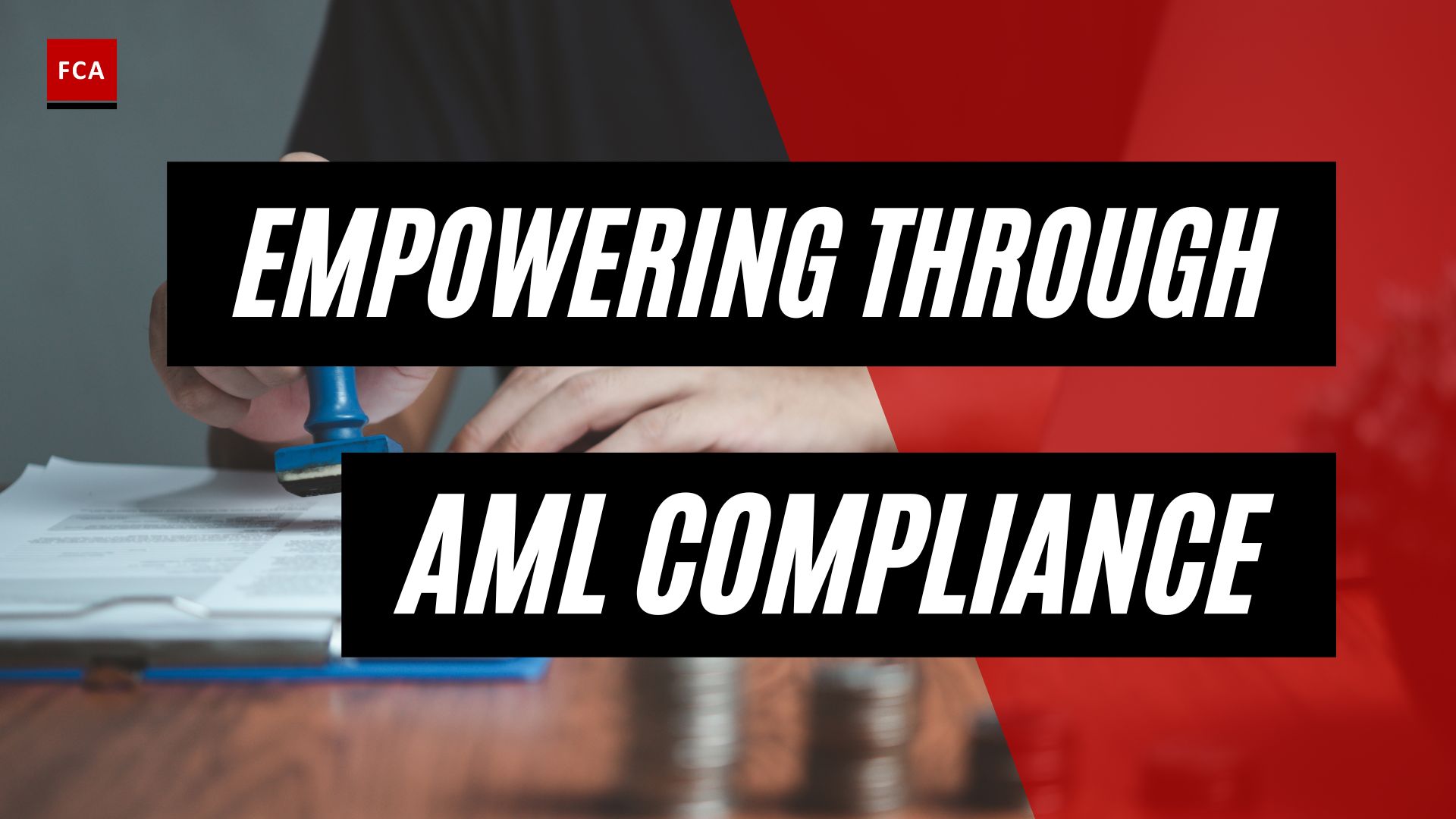Understanding AML Policy Framework
Navigating the complex world of anti-money laundering (AML) compliance can be challenging, but understanding the policy framework is a crucial first step. This includes defining what an AML policy is, why it’s important, and the key bodies that govern AML compliance.
Definition and Importance of AML Policy
An AML policy is a set of guidelines, procedures, and controls put in place by an organization to prevent, detect, and report money laundering activities. This policy plays a crucial role in ensuring that businesses comply with anti-money laundering laws and regulations, thereby safeguarding the integrity of financial systems and preventing illicit activities.
A comprehensive AML policy should address various aspects including appointing a Money Laundering Reporting Officer (MLRO), performing Customer Due Diligence (CDD), verifying client identity, reporting to Financial Intelligence Units (FIU), staff awareness and training, record-keeping, and regular audits. These elements ensure that businesses are equipped to detect and report suspicious activities related to money laundering, terrorist financing, fraud, and other crimes (Sumsub).
Using an AML policy template can assist in the development of an effective AML policy and procedures, providing a structured approach to compliance.
Key Bodies Governing AML Compliance
AML compliance is governed by several regulatory bodies, both at the national and international level. These bodies set the rules and standards that organizations must adhere to, and they play a critical role in enforcing AML regulations.
In the United States, the Financial Industry Regulatory Authority (FINRA) is a key body that oversees AML compliance for brokerage firms and exchange markets. They provide resources such as the AML Template for Small Firms to assist firms in developing their AML policies.
In Canada, the Investment Industry Regulatory Organization of Canada (IIROC) offers guidance on AML compliance, including policy templates for the member community to ensure the integrity of markets.
Understanding the AML regulatory framework is key to ensuring that your organization’s AML policy meets the required standards and can withstand scrutiny from these governing bodies.
By defining the AML policy and recognizing the governing bodies, organizations can develop a solid AML program framework to manage money laundering risks effectively, ensuring compliance with the relevant laws and regulations.
Constructing an AML Policy
Building a robust Anti-Money Laundering (AML) policy is a crucial step towards ensuring compliance with AML laws and regulations. A well-crafted policy can help businesses prevent financial crimes, maintain a good reputation, and avoid legal and financial penalties associated with non-compliance.
Role of AML Policy Templates
AML policy templates play a pivotal role in the creation of an effective AML policy. They provide a structured guideline for businesses to develop their own AML policies tailored to their specific needs and risks. These templates can be particularly beneficial for small firms and businesses in high-risk industries that may not have the resources to develop an AML policy from scratch.
For instance, the Financial Industry Regulatory Authority (FINRA) provides an AML Template for Small Firms, which can be accessed by firm compliance professionals through the FINRA Gateway. Similarly, the Investment Industry Regulatory Organization of Canada (IIROC) offers policy templates and guidance for AML compliance.
Components of an Effective AML Policy
A robust AML policy is composed of several key elements. It should include a risk assessment to identify and mitigate risks to the business, ensuring compliance with anti-money laundering laws and regulations. The role of employees in compliance efforts should be clearly defined, detailing procedures, controls, and reporting structures to manage risks effectively. Regular training on the AML policy should be conducted to ensure employees have the necessary knowledge and skills to identify and report suspicious activities.
Further, the policy should include customer due diligence procedures to verify the identity of clients and assess the potential risks of doing business with them. A strong AML policy can help organizations protect themselves from financial crimes, maintain a good reputation, and avoid legal and financial penalties from non-compliance.
In summary, the key components of an effective AML policy are:
- Risk Assessment
- Employee Roles and Responsibilities
- Regular Training
- Customer Due Diligence Procedures
- Compliance Monitoring and Auditing
Creating an effective AML policy is a dynamic process that requires regular review and adjustments in response to changes in regulatory requirements, business operations, and risk profiles. A well-structured AML policy template can serve as a valuable tool in this ongoing effort to maintain AML compliance.
For more information on implementing AML policies in practice, check out our article on AML policy implementation. For a deeper understanding of the regulatory framework that guides these policies, see our article on the AML regulatory framework.
Implementing AML Policy in Practice
Once an AML policy has been developed, effective implementation becomes crucial. This involves conducting risk assessments and performing customer due diligence.
Risk Assessment in AML Policy
A comprehensive AML policy should include a clear framework for risk assessment. This involves identifying potential risks associated with money laundering and terrorist financing within the organization. It also requires the development of controls and procedures to mitigate these risks.
The risk assessment process should be thorough and systematic, covering all areas of the organization’s operations that may be vulnerable to money laundering activities. This includes understanding the types of customers the organization serves, the products and services it offers, and the jurisdictions in which it operates.
The AML policy should define the role of employees in compliance efforts, detailing procedures, controls, and reporting structures to manage risks effectively. This underpins the AML compliance framework and contributes to the overall effectiveness of the AML program framework (Tookitaki).
Customer Due Diligence and AML Policy
Customer due diligence (CDD) is another critical component of an effective AML policy. This involves verifying the identity of clients and assessing the potential risks associated with doing business with them (Tookitaki).
The policy template should outline the procedures for conducting CDD. This may include obtaining identification documents from clients, verifying their source of funds, and understanding the nature of their business or occupation.
In addition to initial due diligence, ongoing monitoring of client transactions is crucial to identify any suspicious activities that may indicate money laundering or terrorist financing. If such activities are detected, the policy should stipulate the procedures for reporting these to the relevant authorities.
Training on the AML policy should be conducted regularly to ensure employees have the necessary knowledge and skills to perform CDD and to identify and report suspicious activities. This forms a key part of AML policy implementation and AML policy review.
In summary, proper implementation of the AML policy is key to ensure compliance with AML regulatory framework and to prevent the organization from being exploited for money laundering or terrorist financing activities.
AML Policy Compliance and Training
Once an anti-money laundering policy (AML policy) is in place, its true effectiveness lies in its implementation and adherence. This is where the critical aspects of employee training and consistent monitoring come into play.
Importance of Employee Training
A comprehensive AML policy should address various aspects including staff awareness and training, ensuring that businesses are equipped to detect and report suspicious activities related to money laundering, terrorist financing, fraud, and other crimes (Sumsub). The AML policy should define the role of employees in compliance efforts, detailing procedures, controls, and reporting structures to manage risks effectively.
Regular training on the AML policy should be conducted to ensure employees have the necessary knowledge and skills to identify and report suspicious activities. Furthermore, employees need to be trained on their responsibilities under the policy, the risks associated with non-compliance, and the correct procedures for reporting any suspicious activities. This training should be updated regularly to reflect changes in the regulatory environment, as well as evolving threats and trends in money laundering and terrorism financing.
Such training ensures that all employees, regardless of their role, are aware of the part they play in maintaining the organization’s compliance with AML regulations. For more information on the requirements of an effective AML policy, refer to our guide on aml policy requirements.
Monitoring and Auditing AML Compliance
AML programs prevent money laundering through customer due diligence, transaction monitoring, and detecting and reporting suspicious activity. Developing an effective AML policy is crucial to handling new and complex money laundering attempts, thereby protecting businesses from financial and reputational losses.
Monitoring and auditing are integral components of a robust AML compliance framework. Regular audits should be conducted to assess the effectiveness of the organization’s AML policy and to identify any gaps or areas for improvement. The results of these audits should be used to refine and enhance the policy, ensuring it remains up-to-date and effective in combating money laundering threats.
Moreover, a strong AML policy template can help organizations protect themselves from financial crimes, maintain a good reputation, and avoid legal and financial penalties from non-compliance.
To ensure your organization’s AML policy remains robust and effective, it is crucial to regularly review and update the policy in line with current regulations and industry best practices. For more on this topic, see our guide on aml policy review.
AML Policy in Different Industries
Anti-Money Laundering (AML) policies play a vital role in various industries, particularly in financial institutions and businesses at a higher risk of exposure to money laundering. The necessity of an AML policy depends on the jurisdiction and specific AML regulations applicable in the region.
Financial Institutions and AML Policy
Financial institutions, such as banks, are required to have robust AML policies in place to prevent money laundering and terrorist financing. These policies should include measures such as customer due diligence, transaction monitoring, and reporting suspicious activities to regulatory authorities.
A comprehensive AML policy for financial institutions should address various aspects including appointing a Money Laundering Reporting Officer (MLRO), performing Customer Due Diligence (CDD), verifying client identity, reporting to Financial Intelligence Units (FIU), staff awareness and training, record-keeping, and regular audits (Sumsub). These protocols ensure that banks and other financial institutions are equipped to detect and report suspicious activities related to money laundering, terrorist financing, fraud, and other crimes.
For more on creating an effective AML policy within a financial institution, refer to our guide on aml policy and procedures.
Other High-Risk Businesses and AML Policy
Apart from financial institutions, other high-risk businesses, such as money service businesses, law firms, casinos, tax advisors, and forex brokers, also need to have effective AML policies to mitigate the risk of money laundering and comply with regulatory requirements.
Just like in financial institutions, these businesses should have a comprehensive AML policy in place that includes components such as a designated Money Laundering Reporting Officer (MLRO), Customer Due Diligence (CDD) procedures, identity verification protocols, reporting mechanisms for Financial Intelligence Units (FIU), employee training programs, record-keeping practices, and regular audits (Sumsub).
These AML policy measures are crucial in aiding high-risk businesses in detecting and reporting suspicious activities, thereby preventing money laundering and other crimes. For more on developing an AML policy for high-risk businesses, check out our guide on aml policy development.
AML Policy and Legal Considerations
As the dynamics of money laundering and financial crimes evolve, it’s crucial for businesses to keep their Anti-Money Laundering (AML) policies up-to-date, adhering to the latest legal requirements and regulations. This section discusses the AML regulations across jurisdictions and the penalties for non-compliance with AML policy.
AML Regulations Across Jurisdictions
AML regulations vary across jurisdictions, making it essential for businesses to understand and comply with the AML laws and regulations in the countries where they operate. At the international level, the Financial Action Task Force (FATF) acts as a global money laundering and terrorist financing watchdog, issuing global standards to prevent money laundering Sumsub.
On the national level, regulating bodies differ by country, such as BaFin in Germany, FINTRAC in Canada, and MAS in Singapore. These bodies oversee the implementation of AML laws and regulations, ensuring that financial institutions and other businesses have adequate AML policies and procedures in place Sumsub.
An AML policy template, like those offered by FINRA and IIROC, can be a useful tool for businesses to develop their AML policies, ensuring compliance with anti-money laundering laws and regulations.
Penalties for Non-Compliance with AML Policy
Non-compliance with AML regulations can result in severe penalties, including hefty fines, loss of licenses, and damage to a business’s reputation. The specific penalties for non-compliance with AML policy vary by jurisdiction and the severity of the violation.
To avoid these penalties, businesses should have a comprehensive AML policy in place, addressing various aspects including appointing a Money Laundering Reporting Officer (MLRO), performing Customer Due Diligence (CDD), verifying client identity, reporting to Financial Intelligence Units (FIU), staff awareness and training, record-keeping, and regular audits Sumsub.
These elements ensure that businesses are equipped to detect and report suspicious activities related to money laundering, terrorist financing, fraud, and other crimes. With a strong AML policy and robust compliance framework, businesses can effectively mitigate the risks associated with money laundering and financial crimes.
For more information on how to develop, implement, and adhere to AML policies, refer to our resources on AML policy development, AML policy implementation, AML policy review, and AML policy documentation.









